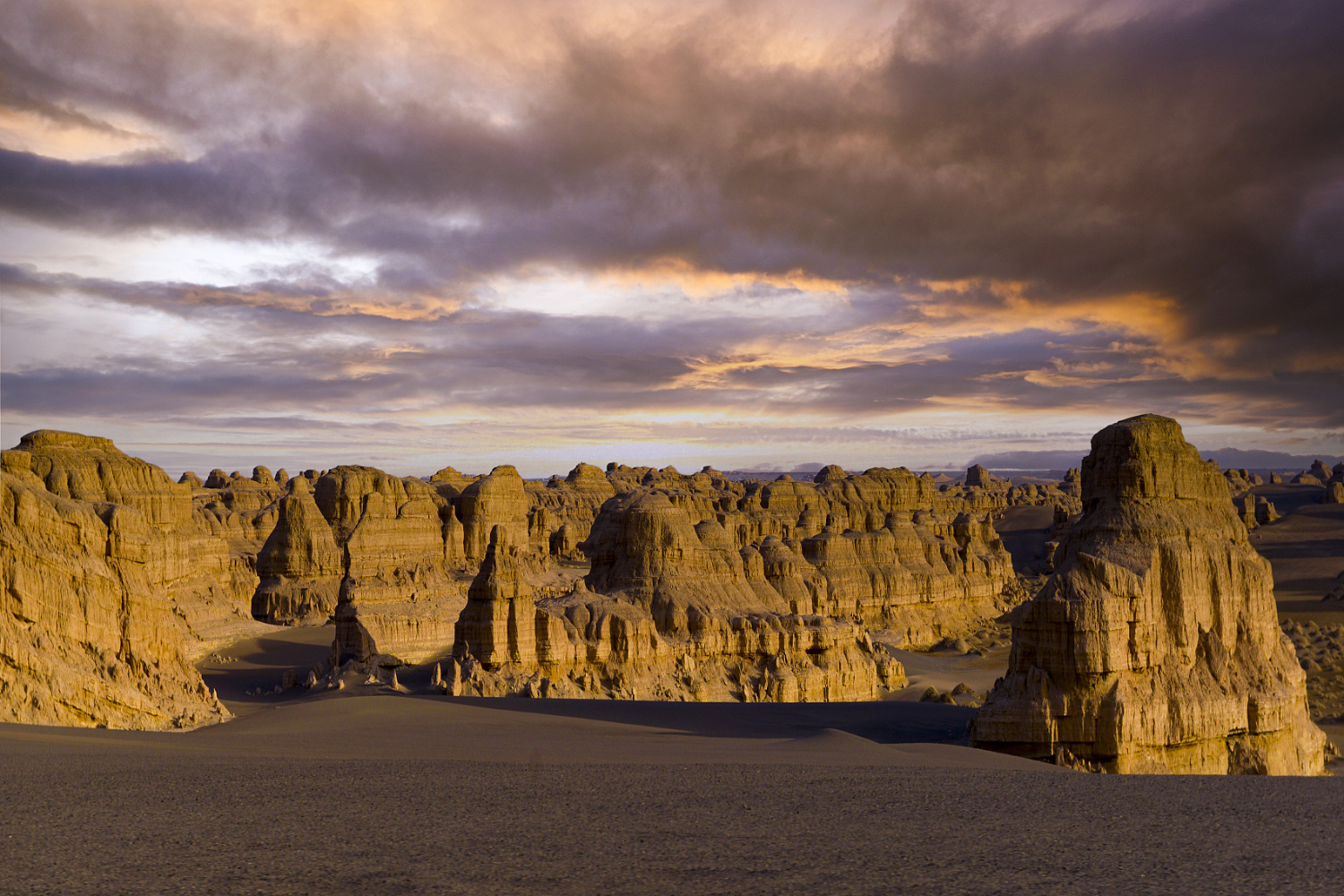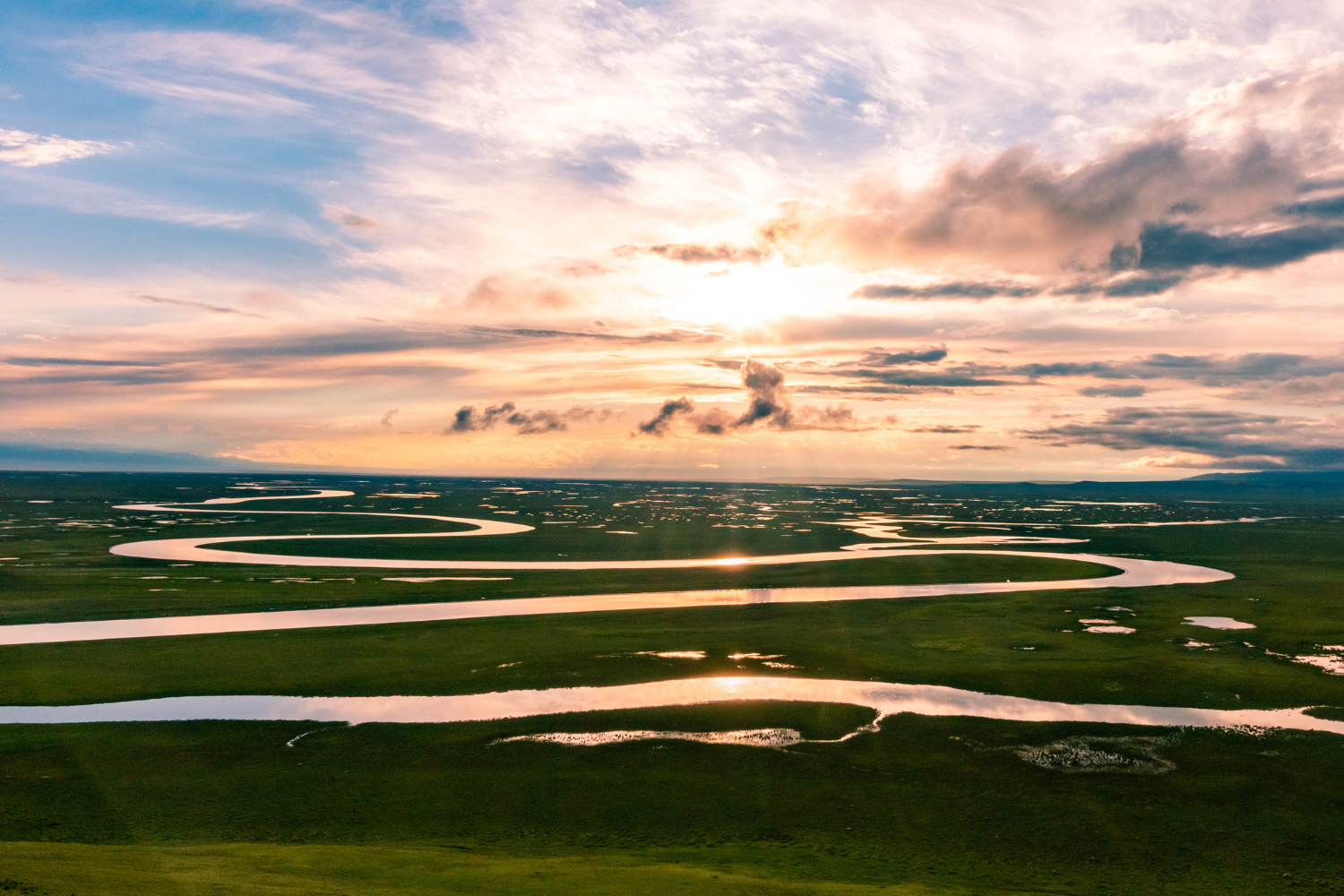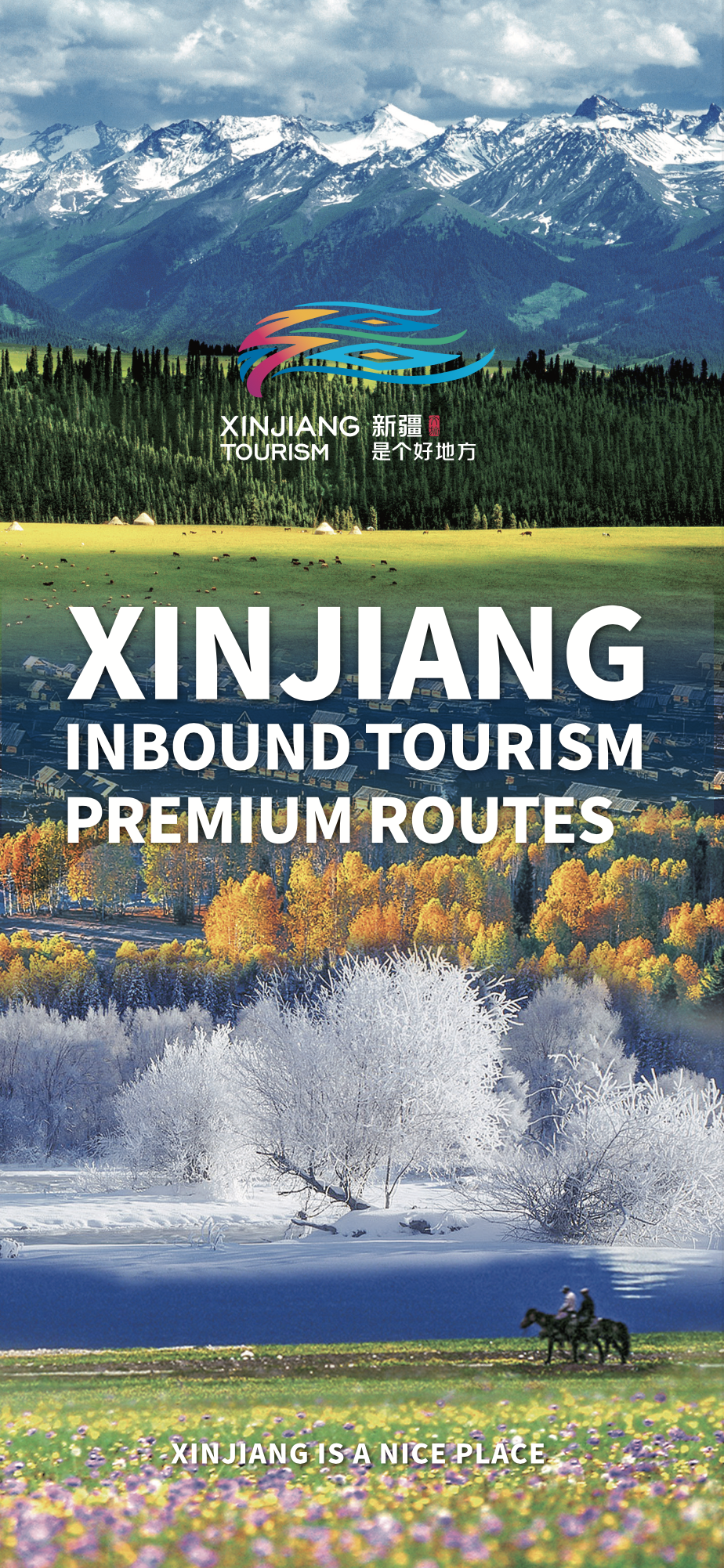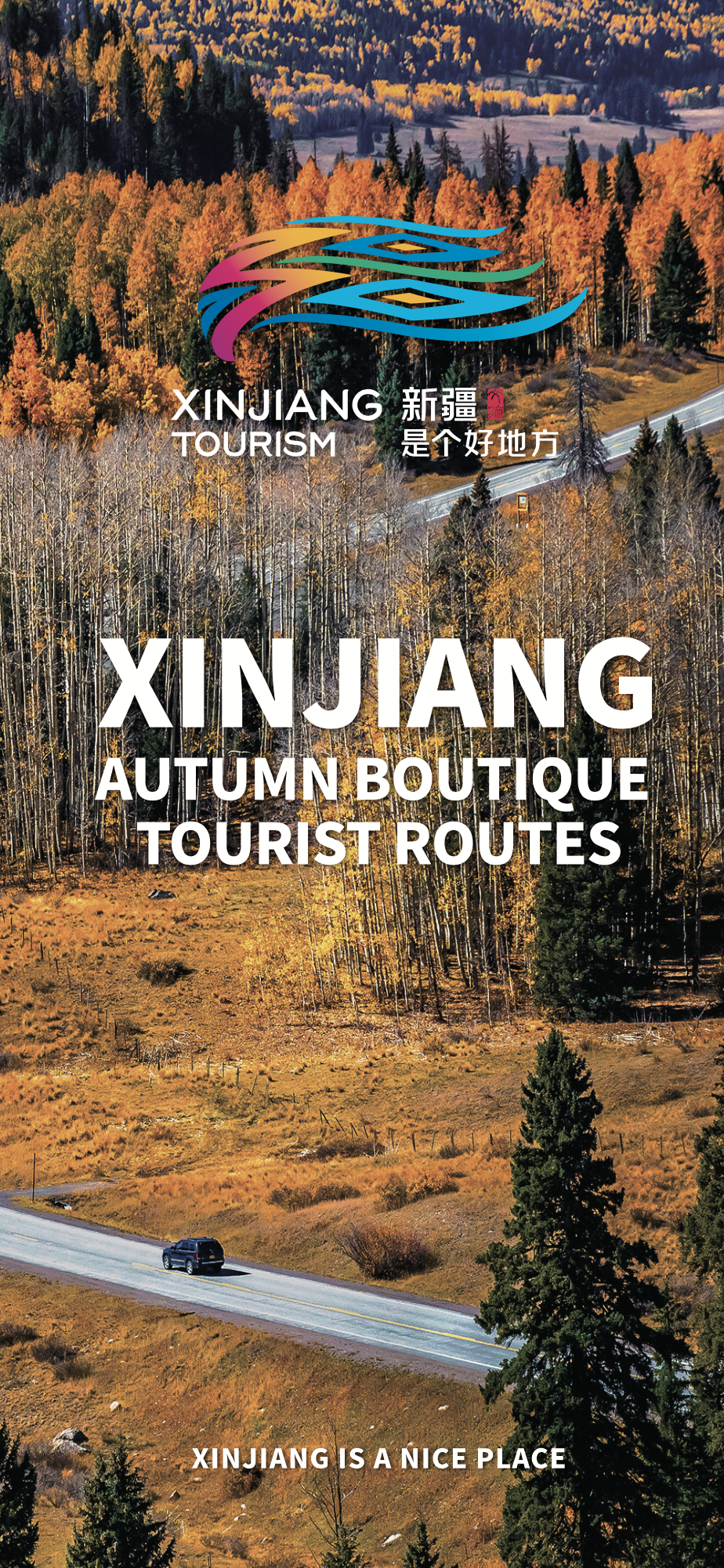Xinjiang is a Nice Place

Welcome to the vast and magnificent Xinjiang, and you will be impressed by the imposing weather condition told in the lines of “Winds blow for miles with main and might Past the Jade Gate which stands so proud.”
Vast Land in Xinjiang
Welcome to the vast and magnificent Xinjiang, and you will be impressed by the imposing weather condition told in the lines of “Winds blow for miles with main and might Past the Jade Gate which stands so proud.”
A visit to Xinjiang would make you more aware of the magnitude of China. Speaking of Xinjiang, it boasts a vast territory. Xinjiang occupies a total area of more than 1,660,000 square kilometers, representing about one-sixth of China’s total land area. It extends about 2,000 kilometers from east to west and about 1,600 kilometers from north to south. Xinjiang is China’s largest province by area and has the longest land border, spanning over 5,700 km, and it shares borders with eight countries, making it the province in China that borders the most countries.
The region features five major land ports that facilitate trade with these neighboring countries and plays a vital role in the Silk Road, connecting Europe and Asia. As the largest prefecture-level administrative unit in China, Xinjiang governs the largest county and township in China in terms of land area. Speaking of Xinjiang, it boasts great mountains and waters. Xinjiang has the lofty Altai Mountains in the north, the rolling Tian Shan Mountains in the center, and the soaring Kunlun Mountains in the south, with the Tarim Basin and the Junggar Basin, the two largest basins in China, nestled in the middle of them. Xinjiang is home to the Tarim River, the largest inland river in China, and the Bosten Lake, the largest inland freshwater lake. Xinjiang comprises high mountains, rivers and lakes, basins, oases, deserts and the Gobi.
Speaking of Xinjiang, it boasts a vast land area and abundant resources. Xinjiang’s vast territory provides it with a unique abundance of resources. The region boasts over 18,000 tourism-related sites, including 598 A-level tourist attractions. Its diverse tourism resources encompass various types and offer excellent combinations, attracting significant attention both in China and internationally. Xinjiang has discovered 153 types of minerals, accounting for 88% of the country, with 11 types topping the national list. Its predicted reserves of petroleum and natural gas come first in the country, and its developable capacity for solar energy and wind energy rank first and second in the country. Xinjiang is China’s largest cotton producing area and one of China’s five major pastoral areas. Xinjiang is also one of the world’s six major fruit production belts, earning it the reputation as the “land of melons and fruits.”
Beautiful Scenery in Xinjiang
Welcome to the picturesque Xinjiang, and you will be impressed by the jubilant melody of Dao Lang’s song “The Most Beautiful Thing is Still in Xinjiang.” The beautiful Xinjiang caters to people’s needs for something romantic. The beauty of Xinjiang lies in its breathtaking grandeur, showcasing a diverse range of natural wonders. Here, glaciers and snow-capped mountains coexist with the vast Gobi Desert. The Altai, Tianshan, and Kunlun mountains contribute to the region’s majestic peaks and glaciers, while the Tarim and Junggar basins shape its stunning desert landscapes. Additionally, the Tarim, Ili, and Irtysh rivers flow through the region, creating the unique oasis-desert ecosystems. Together, these features make Xinjiang a year-round destination of remarkable scenic beauty.
In Spring, Xinjiang is like a graceful dancer. The Nalati Prairie revitalizes itself with budding greenery, the Guozigou Scenic Spot is filled with pink apricot blossoms in a dream-like atmosphere, and the Bayanbulak Prairie is seen with a flock of birds in a sea of misty clouds. All these make Xinjiang a romantic place.
In Summer, Xinjiang is like a magnificent song. Huocheng lavender fields present a purple sea and Zhaosu rapeseed fields create a golden paradise with wind. Cruising on Tianchi of Tian Shan, strolling around the Sayram Lake, and taking a close encounter with the Kanas Lake, will fascinate your eyes with a blue world. All these heavenly landscapes constitute a colorful picture.
In Autumn, Xinjiang is like a vivid painting. The thousand-year-old populus euphratica forests look picturesque on the Gobi, in the desert and by the rivers; all kinds of fruits and melons are fragrant on the pomegranate trees, under the grapevines and in the apple orchards; and herds of cows and sheep wander leisurely on the pastureland, in the valleys and beside the villages. All these afford a cozy and relaxing atmosphere.
In Winter, Xinjiang is like an enchanting poem. Skiers ski in the snow-covered Altay, and tourists sing and dance beside the bonfires in the ancient villages of Kom-Kanas Mongolian Ethnic Township. These scenes offer a quiet and beautiful atmosphere.
Profound Culture in Xinjiang
Welcome to the culturally appealing Xinjiang, and you will be impressed by the “Five stars rising in the East” armband unearthed in Xinjiang. Steeped in history and culture, Xinjiang is a melting pot not only for cultures of all ethnic groups, but also for four major civilizations of the world, where diverse cultures exist in harmony. Xinjiang is regarded as a key point on the ancient Silk Road, serving as a vital crossroads for trade and cultural exchange between the East and West. Its history is shaped by the Silk Road culture, as well as by regional culture, folk traditions, red revolutionary history, and military reclamation efforts.
The ancient Silk Road extended approximately 5,000 km and comprised a network of three main trade routes: the southern, northern, and central routes. Along these routes, numerous cultural sites emerged, including ancient cities, tombs, and military-agricultural colonies, each showcasing remarkable wonders, natural landscapes, and a rich cultural heritage. In Xinjiang, a number of historical relics, such as the Protectorate of the Western Regions, the Anxi Protectorate, the Beiting Protectorate, and the Ili General Mansion, bear witness to the joint efforts of people of all ethnic groups in developing their country.
In Xinjiang, there are a number of world cultural heritages, such as the world-famous Loulan Ruins, the Jiaohe Ruins, the Gaochang Ruins, the Niya Ruins, and the Kizil Grottoes. They tell the stories of the Silk Road and its ancient history. Numerous ancient routes, such as the Wusun Ancient Road, the Cheshi Ancient Trail, and the Sangzhu Ancient Road, traversed the Silk Road. These historic paths attract countless tourists to explore Xinjiang.
In Xinjiang, there were a number of prominent figures such as Zhang Qian, Princess Jieyou, Ban Chao, Kumārajīva and Yūsuf Balasaguni They made huge contributions to the history of the country. In Xinjiang, there are a wealth of cultural treasures, such as the Twelve Muqam, the Epic of Manas, the Aytysh, and the Epic of Jangar. They constitute an invaluable part of the cultural arsenal of China. In Xinjiang, the spirit of populus euphratica trees, the spirit of Karakorum, the spirit of patriotism and other spirits persistently nourish this land and its people.
Tasty Food in Xinjiang
Welcome to the lovely and romantic Xinjiang, and you will be impressed by the harvest orchards and the bustling Bazaar. Xinjiang is a renowned fruit-producing region in China, known for its diverse range of fruits, including pomegranates, grapes, and apples. From Zhang Qian’s “Journey to Open Route Linking the East and West” to today’s “Belt and Road,” a diverse, multi-location, multi-kind food cultures have been exchanged and mixed in Xinjiang, making it the most distinctive part of the Chinese national food culture. Delicious foods can be found throughout Xinjiang, from northern to southern regions and in both cities and villages. Every bite offers a taste of the local customs, bringing an unforgettable experience.
Xinjiang is home to a wide variety of unique food. In particular, grapes, pomegranates, figs, pears, mulberries, apricots, among other melons and fruits are all mouth-watering. Lip-smacking sliced mutton barbecue, tender and tasty Dapanji stewed chicken, crispy baked buns, savory and delicious milk tea, etc. can always satisfy every gourmet’s appetite. Boiled lamb, noodles served with soy sauce, and lamb leg pilaf can be found on stores across streets and alleys, and the rural bazaars are packed with stores offering baked naan, grilled fish, pigeon soup, and smoked horse intestines to satisfy appetites of foodies.
Thanks to the abundance of natural resources and the culinary expertise of the people of Xinjiang, each bite tells a story about this remarkable land. The “A Bite of the Silk Road” event, centered around food, symbolizes the integration of culture and tourism development in Xinjiang and serves as a bridge for cultural exchanges under the Belt and Road Initiative.



















